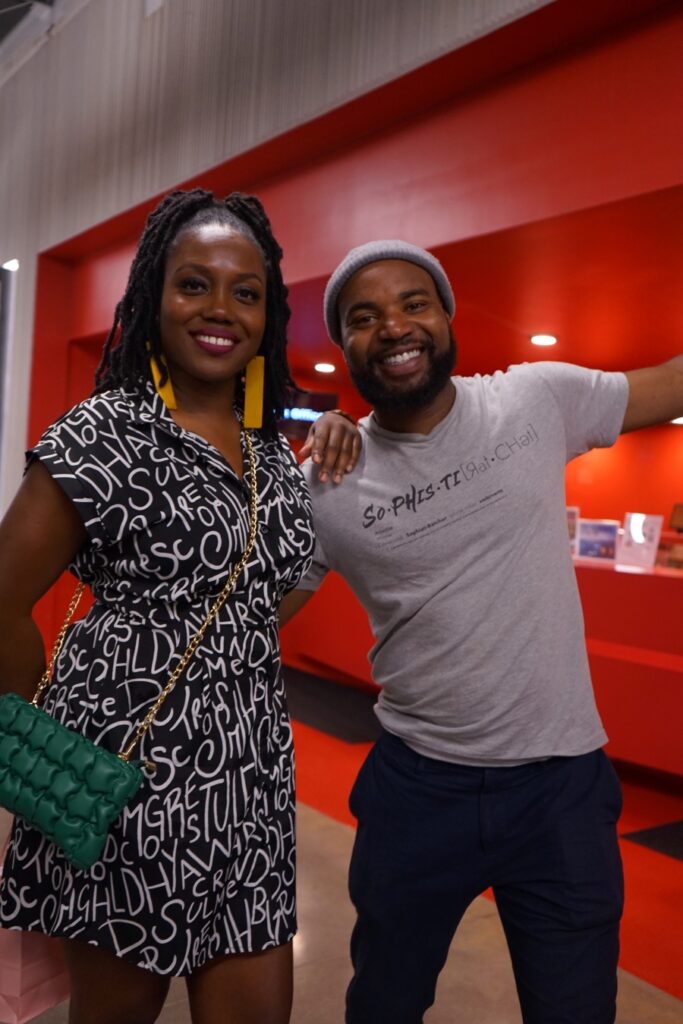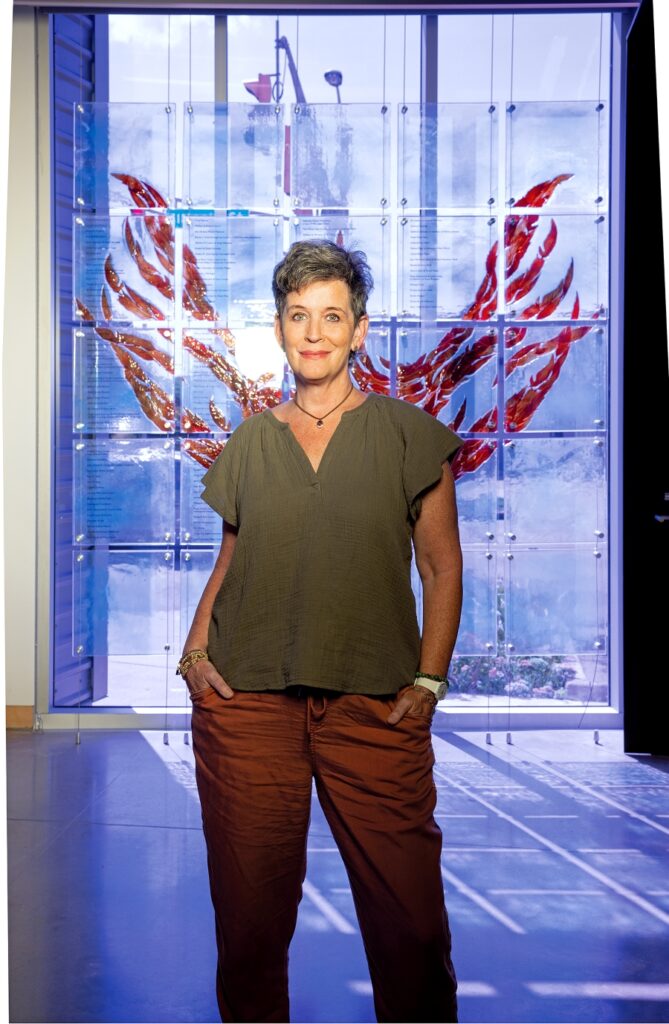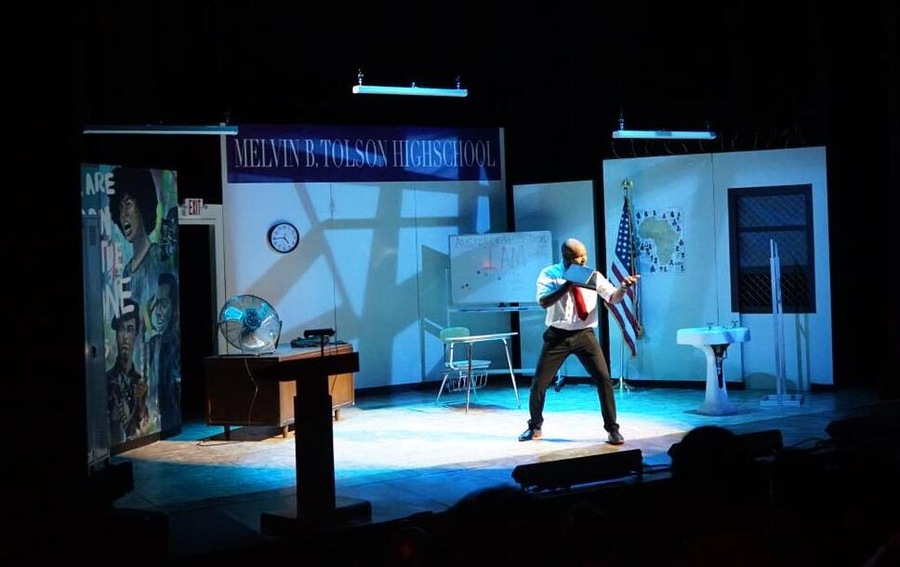On a sold-out evening in May, Naptown African American Theatre Collective (NAATC) marked the beginning of its inaugural season with a one-night-only performance of Black Book, written by and starring the multi-talented artist and scholar Austin Dean Ashford. While the enthusiastic reception of Black Book at the Phoenix Cultural Centre publicly marked the nonprofit’s entrance into the Indianapolis theatre scene, the creation of Indy’s first Black Equity theatre has been long in the making. It’s an idea that founder and producing director LaKesha Lorene said began as a conversation with fellow theatre artist and writer Jamaal McCray, with an intention to establish a hub for Black artists in Indianapolis.

“I just saw the need for us to have a theatre focused on Black stories for everyone in our community here to help diversify and change the way we see ourselves,” said Lorene. “[NAATC] needs to be a safe space for artists, for art administrators, and it needs to be something that helps us build sustainability.”
NAATC is the product of a collective effort of artists and arts administrators united in their mission to create a sustainable artistic home for Indy theatremakers. While Indianapolis features several long-standing organizations dedicated to telling Black stories, such as Asante Children’s Theatre (now the Asante Arts Institute) and the living Black history museum Freetown Village, Lorene notes that “none of the Black theatres have their own buildings. And that’s not by chance.” Lorene hopes that NAATC can shift this trend. “If we’re going to do this, we have to do this together,“ Lorene said. “Everyone deserves an opportunity to be a part of and to see what it’s like to work at a professional theatre.”
To that end, NAATC is opening as an Equity theatre, making a formal commitment to Equity’s compensation rates and offering non-union artists an opportunity to work toward Equity membership. Prior to NAATC, the Indianapolis area was home to four Equity theatres, but, as Lorene pointed out, none share NAATC’s mission. An Equity member herself, Lorene saw an urgent need for an alternative. Other Equity houses she works in, she said, are “not normally as diverse throughout the year,” and most Black theatres in the city are non-union, which can create a professional barrier for union actors.

“You know, I was performing for free,” said actor Brenton Anderson, who also works with NAATC. “I did it because I have the passion for it. But after a while, it’s like, okay, now let’s start to do this for real. NAATC was needed for the African American community so we can continue to work and make a living off of it.”
By providing a professional artistic hub for Black artists in Indianapolis, NAATC aims to generate opportunities for members of the community to be compensated for their artistic contributions and take the next step toward sustaining professional careers in the performing arts. Anderson additionally hopes that NAATC’s Equity status will allow for Indy-bred artists to forge sustainable careers in the city.
The Indy Arts Council, a civic organization dedicated to nurturing a thriving arts community in Indianapolis, has been a key supporter for the organization’s inaugural season. Nikki Kirk, the Council’s director of community investment, said that NAATC contributes to a strong ecosystem of arts programming in Indianapolis that aims to sustain itself through mutual support.
“I think a space like that is gonna be a really great center of power for Black theatre,” Kirk said, “and I think it’s kind of a calling card to folks in other spaces to say, you know, it’s happening here in Indy, and it’s not only happening, but it’s happening really well.”
Kirk believes that NAATC and the Arts Council share a mutual interest in the creation of a localized knowledge base for artists that can allow them to expand to other nearby markets, like Chicago or Atlanta. Helmed by Black theatremakers with considerable experience navigating the Indy theatre scene, NAATC is built by local artists for Indy-based artists looking to foster lasting artistic growth and connection. NAATC aims to facilitate career development opportunities for artists of all backgrounds and levels of experience while also offering a year-round commitment to staging plays centering Black playwrights and performers. Their upcoming season includes Dominique Morisseau’s Detroit ‘67 (in September), August Wilson’s Ma Rainey’s Black Bottom (in March 2024), and Loy A. Webb’s The Light (in May 2024). Lorene also noted co-leader and director of community engagement strategy Latrice P. Young’s efforts with NAATC’s current and ongoing work with schools in Indy and in outlying counties to expand the company’s impact beyond city limits.

Lorene declined to share the organization’s current operating budget, but said the company has primarily been backed by foundations, corporate sponsors, and a growing number of individual donors. NAATC also received a $30,000 grant from the Central Indiana Community Foundation.
In addition to navigating the process of establishing NAATC as a 501(c)3 nonprofit and working to meet Small Professional Theatre (SPT) qualifications with Equity, Lorene acknowledged that there were challenges along the way, systemic hurdles that have slowed the company’s efforts to secure funding and space in its early stages.
“With larger funders, we still have that barrier sometimes as a Black-run and -led organization,” said Lorene. “Often Eurocentric artists are able to simply present an idea and get supported financially for it. We get the first, third, and fourth degree about projects we are already programming, licensing, and staffing.”
Fortunately, however, the Indianapolis theatre community saw the need for NAATC and offered resources to support the organization. NAATC found a home for its first season in the 200-seat theatre at the Phoenix Theatre Cultural Centre, a long-standing local professional theatre institution.

Constance Macy, artistic director at Phoenix, said that NAATC’s residency offers mutual benefits. In the wake of the pandemic, the Phoenix devised a plan to host a series of theatre companies in residence to increase income, including American Lives Theatre, a company dedicated to telling stories that reflect the lives and histories of Indy natives, and Summit Performance Indianapolis, a feminist theatre collective, among others. Phoenix splits the house earnings with its resident companies, ideally creating a sustainable financial relationship between organizations. The collaboration with NAATC, Macy said, was sown by a long-time working relationship.
“LaKesha came to me and said, ‘I love the Phoenix and I really want the Phoenix to be our home until we can afford one of our own,’” Macy recalled. “I was just thrilled by that. We already have a relationship, and she had quite a relationship with the Phoenix.” Indeed, Lorene had performed on the Phoenix stage in Barbecue by Robert O’Hara (2017) and Fairfield by Eric Coble (2018), and she and Macy both serve as company members in the Indianapolis Shakespeare Company. Macy added that this new partnership with NAATC is already making an impact on audience demographics.
“You know, more and more people of color are coming to the Phoenix to see plays,” said Macy. “We’re seeing our audience go from old white people to young, diverse people, and it’s just really exciting to me. It gives me hope for the future of this art form and this place.”
Looking ahead, Lorene said that the organization has goals to build a brand new facility over the next few years, hire full-time staff to support year-round programming, and provide more educational opportunities for the community. NAATC aspires toward a larger season to platform more work by and for Black artists, invest further in their career development strategies, and expand the collective’s artist base in the coming years.
“There is so much talent in this city that everyone deserves an opportunity to be a part of,” said Lorene. “Artists deserve to see what it’s like to work at a professional theatre and to also be appreciated in real time for their artistry.”
Lexi Silva (she/her) is a freelance dramaturg, teaching artist, and arts writer based in the Midwest. Her artistic focus is on new work development with a specialty in embodied dramaturgy.


